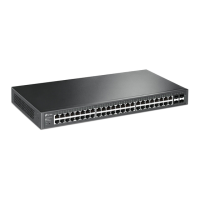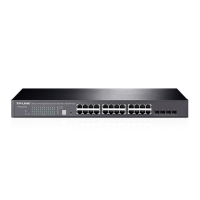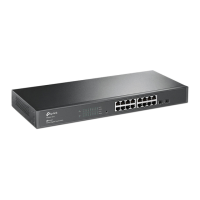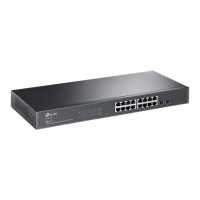Configuring DHCP Service DHCP
Configuration Guide
397
1
DHCP
1.1 Overview
DHCP (Dynamic Host Configuration Protocol) is widely used to automatically assign IP
addresses and other network configuration parameters to network devices, enhancing the
utilization of IP address.
1.2 Supported Features
The supported DHCP features of the switch include DHCP Relay and DHCP L2 Relay.
DHCP Relay
DHCP Relay is used to process and forward DHCP packets between different subnets or
VLANs.
The DHCP client broadcasts DHCP request packets to require for an IP address. Since the
transmission of broadcast packets are always limited in one LAN, so if the DHCP server
are not in the same LAN with the client, the client can never obtain an IP address from the
DHCP server. Therefore, each LAN should be equipped with a DHCP server, thus increasing
the costs of network construction and bringing trouble for central network management.
DHCP Relay solves this problem. The DHCP Relay device acts as a relay agent and
forwards DHCP packets between DHCP clients and DHCP servers in different LANs, so that
DHCP clients in different LANs can share one DHCP server.
The DHCP Relay feature supports Option 82 and DHCP VLAN Relay.
Option 82
The switch can record the location information of the DHCP client using Option 82. The
switch can add Option 82 to the DHCP request packet and then transmit the packet to the
DHCP server. The DHCP server which supports Option 82 can set the distribution policy of
IP addresses and the other parameters, providing a more flexible address distribution way.
DHCP VLAN Relay
DHCP VLAN Relay allows clients in different VLANs to obtain IP addresses from the DHCP
server using a single agent interface IP address.
In DHCP VLAN Relay, you can simply specify VLAN interface 1 (the default management
VLAN interface) as default agent interface for all VLANs. The switch will fill the default
agent interface’s IP address in the relay agent IP address field of the DHCP packets from all
VLANs.

